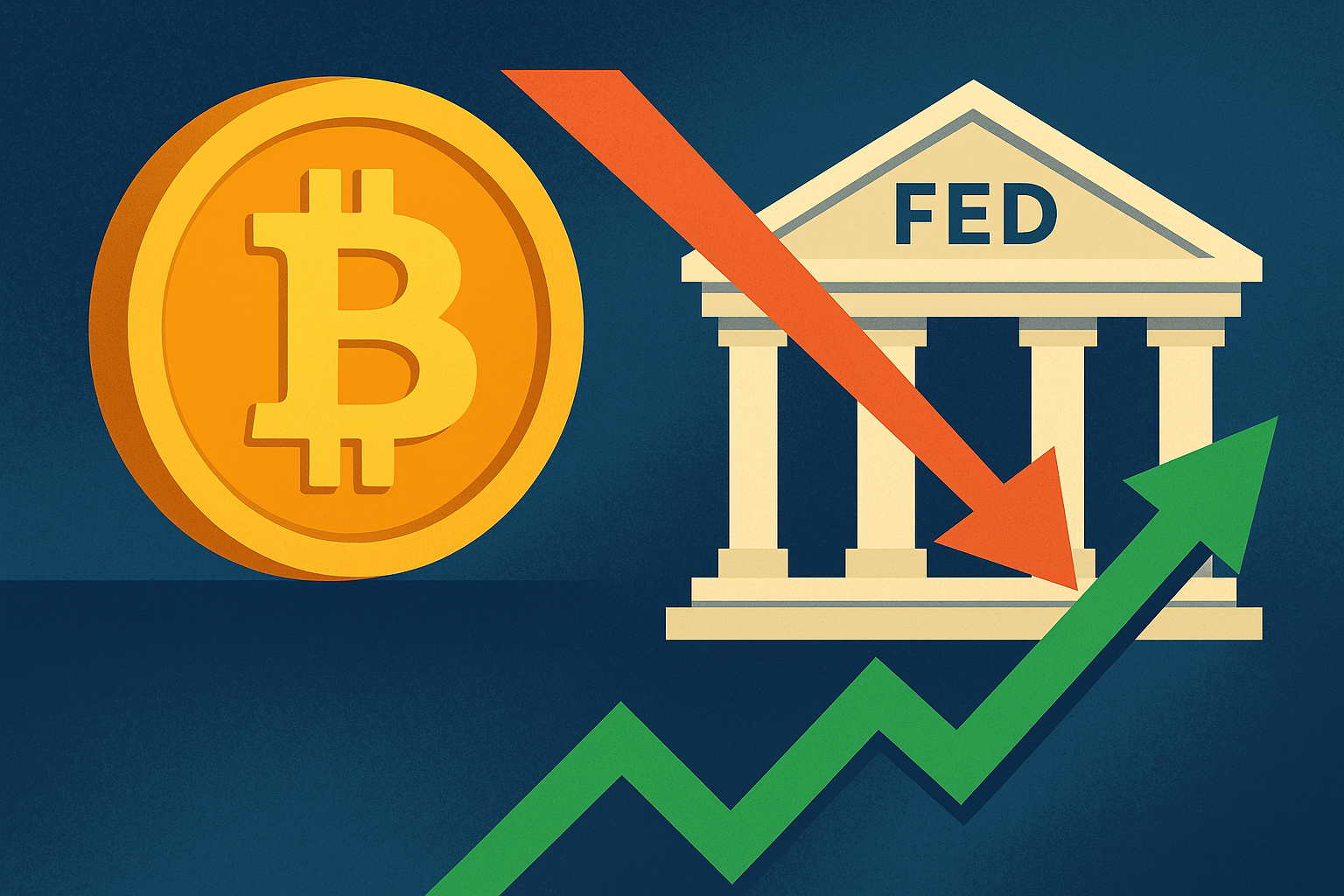Bitcoin surged past US$117,000 on September 18, 2025, following the U.S. Federal Reserve’s widely anticipated 25 basis point interest rate cut. The move, aimed at stabilizing economic growth amid mixed inflation signals, has rippled across financial markets, with crypto emerging as a standout beneficiary. For investors, this rally signals not just optimism around Bitcoin but also deeper questions about risk appetite, institutional adoption, and the shifting macroeconomic backdrop.
Why This Matters for Investors
The Fed’s rate cut—its first in months—was designed to provide relief in a slowing yet resilient U.S. economy. For traditional markets, lower borrowing costs typically encourage risk-taking and boost valuations. But for Bitcoin, often dubbed “digital gold,” the story is more complex.
Historically, crypto markets have thrived in liquidity-rich environments, where capital seeks returns beyond traditional equities and bonds. As the discount rate falls, speculative and growth-oriented assets like Bitcoin become more attractive. The latest rally, though modest at 1%, reflects confidence that crypto will remain an integral part of the risk-asset landscape in a lower-rate world.
According to data from CoinSwitch Markets Desk (via The Economic Times), Bitcoin’s price rose to $117,484, defying expectations of heightened volatility in the immediate aftermath of the Fed decision. Instead, the market absorbed the policy shift with relative calm—a sign of increasing maturity and depth in crypto trading.
Fed Policy and Crypto’s Growing Institutional Appeal
The intersection of Fed policy and crypto adoption is increasingly clear. Institutional investors, who once viewed Bitcoin as a fringe asset, are now entering through regulated products such as spot Bitcoin ETFs. Regulatory progress in the U.S. and Canada has played a pivotal role:
- The SEC’s evolving framework for crypto ETFs has paved the way for mainstream adoption.
- Canadian regulators have already approved several crypto ETFs, providing North American investors with easier exposure.
With the Fed signaling a willingness to ease monetary conditions, institutions could ramp up allocations to Bitcoin as part of diversified portfolios. As Bloomberg Intelligence analysts have noted in previous reports, even a modest institutional allocation of 1–2% of global AUM could drive significant upside for Bitcoin’s market capitalization.
Risks That Could Temper the Rally
Despite the enthusiasm, risks loom large.
- Inflation persistence: If U.S. inflation proves sticky, the Fed may be forced into a more hawkish stance, undermining the rate-cut narrative.
- Dollar strength: A stronger USD often weighs on dollar-denominated commodities and crypto.
- Regulatory overhang: While ETF progress is encouraging, potential crackdowns on stablecoins or DeFi platforms could dampen sentiment.
Moreover, Bitcoin’s historical volatility cannot be ignored. A 1% daily gain is modest by crypto standards, but sharp pullbacks remain a constant risk in the asset class.
Future Trends to Watch
- Altcoin Rotation – If liquidity continues to flow into crypto, investors should monitor whether altcoins (e.g., Ethereum, Solana, XRP) begin to outperform Bitcoin in relative terms.
- ETF Flows – Capital inflows into U.S. and Canadian Bitcoin ETFs will serve as a key barometer of institutional interest.
- Macro Crosscurrents – Geopolitical tensions, inflation data, and Fed forward guidance will all play outsized roles in determining Bitcoin’s trajectory in Q4 2025.
- Correlation Shifts – Watch for changing correlations between Bitcoin and equities. A decoupling could bolster Bitcoin’s role as a portfolio hedge.
Key Investment Insight
The Fed’s decision underscores a pro-liquidity environment that could sustain Bitcoin’s upward momentum. While risks remain tied to regulation and macro shocks, the medium-term trend points to expanding institutional adoption and greater mainstream integration. For investors, a measured allocation to Bitcoin or related ETFs could serve both as a hedge against fiat debasement and as a high-growth exposure in a diversified portfolio.
Stay ahead of the markets with MoneyNews.Today—your trusted source for daily, actionable insights across crypto, commodities, and global financial trends.





